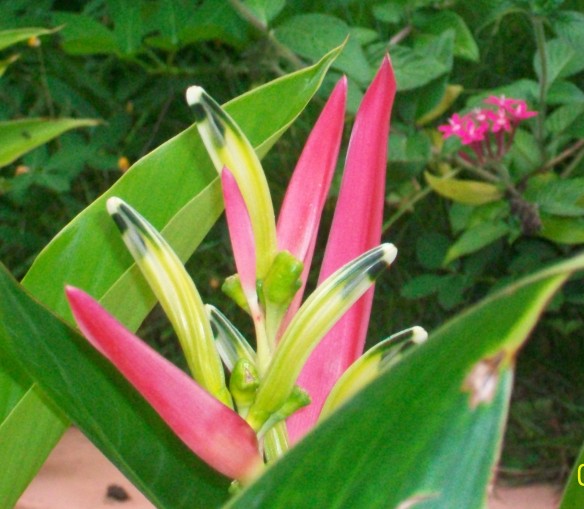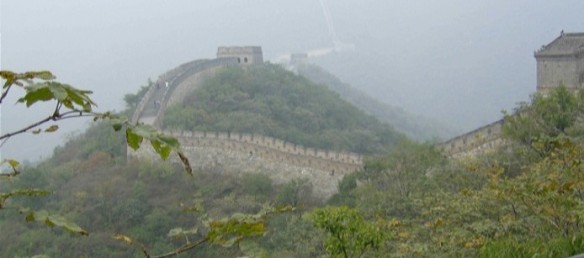 Today, Sunbonnet Sue wears her lovely toga, and honors Dionysus, the Greek god of wine and revelry, and makes her offering of plump grapes to be turned into wine. The lazy Susan stitches add texture and dimension to the grapes, and the embroidered stars on the toga add another interesting textural element. We can all raise a glass of wine and toast Sunbonnet Sue — we’re celebrating our 15th post of Sunbonnet Sue visiting countries around the world (the patterns so far all taken from the book, International Sunbonnet Sue). Next posting, I will show off my first original Sunbonnet Sue pattern, representing the country of….well, you’ll just have to wait a day or two….
Today, Sunbonnet Sue wears her lovely toga, and honors Dionysus, the Greek god of wine and revelry, and makes her offering of plump grapes to be turned into wine. The lazy Susan stitches add texture and dimension to the grapes, and the embroidered stars on the toga add another interesting textural element. We can all raise a glass of wine and toast Sunbonnet Sue — we’re celebrating our 15th post of Sunbonnet Sue visiting countries around the world (the patterns so far all taken from the book, International Sunbonnet Sue). Next posting, I will show off my first original Sunbonnet Sue pattern, representing the country of….well, you’ll just have to wait a day or two….
Dionysus is the son of Zeus and Semele. Here’s how that went: Semele asked her lover, Zeus, to allow her to see him in his real form. He appeared as thunder and lightning, and Semele was consumed in the storm that occurred afterwards. Zeus saved their love child from the ashes of her body. Seeing as he came from a somewhat dysfunctional family, it’s no wonder that Dionysus took to wine and revelry (you may also know him as Bacchus, the Roman god of the grape….). Dionysus married Ariadne, the Cretan princess who helped Theseus defeat the Minotaur. Afterwards, though, she was abandoned on the beach of Naxos, where Dionysus found her as he was beachcombing. Soon after finding Ariadne, Dionysus popped the question to the abandoned princess; after their marriage, they had several children, all associated with wine and wine-making. In today’s world, Dionysus remains quite a popular god, as evidenced by the amount of wine drunk around the world. He is still a revered god at Naxos — in fact, devotees of Dionysus, especially the older, possibly more repressed ladies, become wild maenads (wild women!) for a night, inspired by this god of wine and revelry, engaging in an ecstatic frenzy of dancing and drinking, engaging in abandoned sex, and eventually hunting down their men and devouring their raw flesh while dressed in fawn skins and carrying a big stick wrapped in vine leaves. Hmm. Quite the evening. Well, I can only recommend leaving the fawn skin under lock and key if you’re going to be drinking wine.
Athens is an interesting modern city, even though it is among the world’s oldest cities at around 3,400 years of age. For thousands of years, Athens has been a center for arts, learning, and philosophy — the place where Plato and Aristotle and many other great philosophers debated their grand ideas. The city is often referred to as the cradle of Western civilization and the birthplace of democracy. What I particularly like about Athens is that, while it is a modern city in every sense, it has maintained itself as a classic Greek city, preserving a wide variety of ancient monuments, including the Parthenon, the Acropolis of Athens, and the medieval Daphni Monastery. In 1896, Athens hosted the first modern day Olympics, and rejoiced to bring the Olympics back again in 2004. Since I enjoy history, I always go to see all of the sights and pay homage to the great skills of people who made such substantial, long-lasting monuments and art with only the most basic of tools. Truly amazing.
But of course, I also squeeze in a few minutes (possibly hours, according to my husband) to try to suss out the fabric shops and quilt shops if I can. There are a few, but as always, the search for cottons is tricky one — and often I get waylaid by the other sumptuous, gorgeous, luxurious fabrics that I find. However, if you are on a fabric hunt yourself in Athens, take a ride to the metro station, Monistiraki, walk a block or so to Athineas, then turn on to Agias Eirinis for the fabric shops and later Perikleous Street for the notions shops. You might also try a store called Kaliviotis, on the north side of Ermou near Syntagma, and the shopping streets of Eolou and Agiou Marou. The Athens Central Market is fun — not really for fabrics — but why miss a large market? You’ll find many treasures you never even dreamed existed, but must have! And if you’re in Athens on a Sunday, you might want to check out the flea market at Monistiraki — I’ve never been but I’ve heard it’s wonderful. Also, if you have a minute, check out Nero’s Post and Patch (see my blogroll) for a view of Greek patchwork and quilting and more.
I hope I’ve inspired you to quilt, to embroider, to applique, to travel to Greece and see the sights, or simply to drink more wine and occasionally behave like a wild woman (without the fawn skins and without devouring your husband, mind you!). I leave you with a lovely purple flower, almost the color of purple grapes….




















